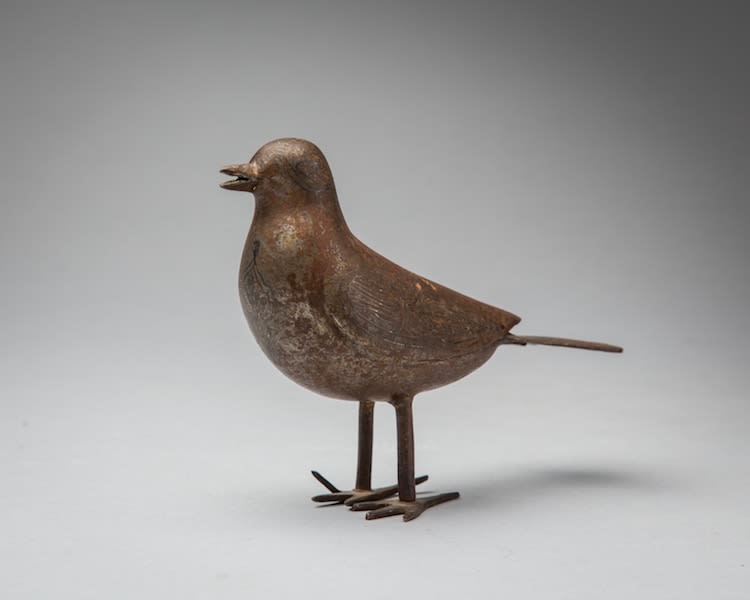Qajar period gold inlaid steel figurine of a sparrow
Steel
6 x 4
MS.1933
Gold and silver damascened steel figurine of a sparrow, decorated by stylized feathers and cusped medallions outlined in gilt. The Qajar dynasty was an Iranian royal dynasty of Turkmen tribal...
Gold and silver damascened steel figurine of a sparrow, decorated by stylized feathers and cusped medallions outlined in gilt.
The Qajar dynasty was an Iranian royal dynasty of Turkmen tribal origin, specifically from the Qajar tribe, which ruled then Persia, nowadays Islamic Republic of Iran, from 1785 to 1925. The state ruled by the Qajar dynasty was officially known as the Sublime State of Iran.
Although the Qajar family took full control of Iran in 1794 and re-asserted Iranian sovereignty over large parts of the Caucasus, they permanently lost many of Iran's integral areas to the Russia over the course of the 19th century, comprising modern-day Georgia, Dagestan, Azerbaijan, and Armenia.
The occupation of Iran during World War I (1914-18) by Russian, British, and Ottoman troops was a blow from which the Qajar dynasty never effectively recovered. With a coup d'état in February 1921, Reza Khan who afterwards ruled as Reza Shah Pahlavi (1925-41) became the preeminent political personality in Iran and the last Qajar sovereign was formally deposed in October 1925 while he was absent in Europe, while the National Iranian Assembly declared the rule of the Qajar dynasty to be terminated.
Damascened is the art of inlaying different metals into one another—typically, gold or silver are inlaid into a darkly oxidized steel background—to produce intricate patterns, much similar to the technique of niello. The English term derives from a perceived resemblance to the rich tapestry patterns of damask silk.
The Qajar dynasty was an Iranian royal dynasty of Turkmen tribal origin, specifically from the Qajar tribe, which ruled then Persia, nowadays Islamic Republic of Iran, from 1785 to 1925. The state ruled by the Qajar dynasty was officially known as the Sublime State of Iran.
Although the Qajar family took full control of Iran in 1794 and re-asserted Iranian sovereignty over large parts of the Caucasus, they permanently lost many of Iran's integral areas to the Russia over the course of the 19th century, comprising modern-day Georgia, Dagestan, Azerbaijan, and Armenia.
The occupation of Iran during World War I (1914-18) by Russian, British, and Ottoman troops was a blow from which the Qajar dynasty never effectively recovered. With a coup d'état in February 1921, Reza Khan who afterwards ruled as Reza Shah Pahlavi (1925-41) became the preeminent political personality in Iran and the last Qajar sovereign was formally deposed in October 1925 while he was absent in Europe, while the National Iranian Assembly declared the rule of the Qajar dynasty to be terminated.
Damascened is the art of inlaying different metals into one another—typically, gold or silver are inlaid into a darkly oxidized steel background—to produce intricate patterns, much similar to the technique of niello. The English term derives from a perceived resemblance to the rich tapestry patterns of damask silk.
